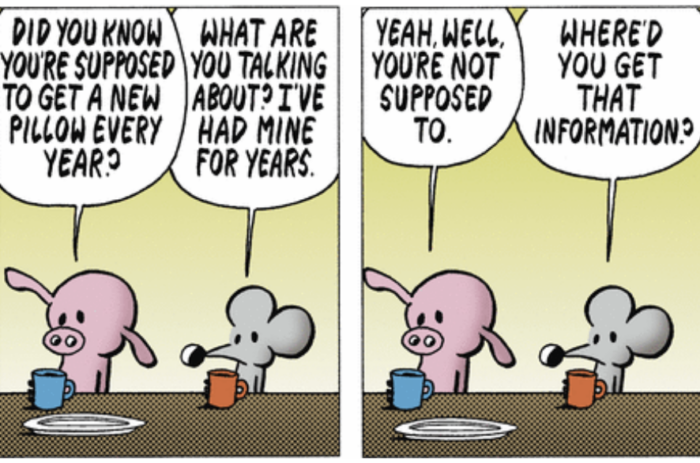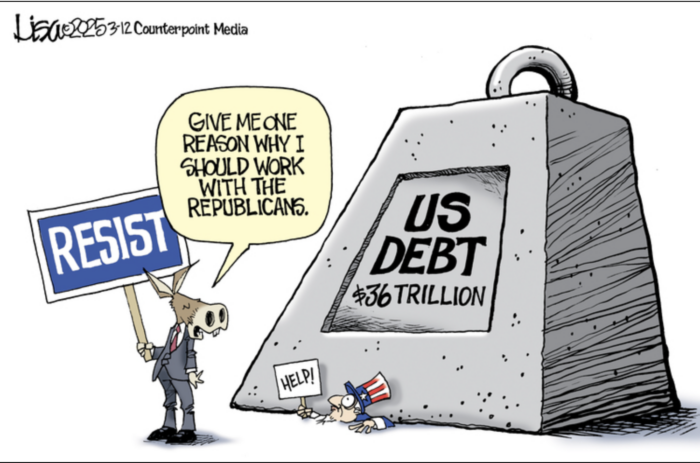print Print Cartoon
Questions
1. Cartoonist Stephan Pastis uses anthropomorphism in his Pearls Before Swine comic strip. Explain the difference between anthropomorphism and personification. (Ask your English teacher if it is ok to identify the literary device used in Pearls as personification :)
2. To what recent news item does this cartoon refer?
3. a) Define exaggeration and hyperbole.
b) Which word do you think best describes this cartoon?
Scroll down to the bottom of the page for the answers.

Cartoon by Stephan Pastis
Answers
1. Personification – when human characteristics are given to animals or inanimate objects; a figure of speech in which human characteristics are attributed to an abstract quality, animal, or inanimate object
Anthropomorphism – a type of personification that gives human characteristics to non-humans or objects – especially animals.
-There is a slight difference between these two. Personification is an act of giving human characteristics to animals or objects to create imagery, while anthropomorphism aims to make an animal or object behave and appear like they are human beings. (literarydevices.net)
From prowritingaid .com and litcharts .com:
- Anthropomorphism is literal. Speaking animals or objects who talk, think, or behave like humans are all anthropomorphic. (Thomas the Tank Engine; Winnie the Pooh). They literally act as if human.
- Personification is figurative. (e.g. “The rain poured down on the wedding guests, indifferent to their plans.” Describing the rain as “indifferent” is an example of personification, because rain can’t be “indifferent,” nor can it feel any other human emotion.)
2. This cartoon refers to the April news story that Amazon has thousands of workers around the world who listen to and review private Alexa conversations.
-Amazon, in its marketing and privacy policy materials, doesn’t explicitly say humans are listening to recordings of some conversations picked up by Alexa.
-Amazon executives told Bloomberg News that the Amazon team transcribes the recordings and shares the conversations with other parts of the company in order to make Alexa’s “understanding of human speech” better.
-Bloomberg revealed that the teams use internal chat rooms to share files when they need help figuring out a muddled word — and more troubling – when they come across an amusing recording. (Read “Amazon workers are listening to Alexa owners“)
3. a)
-exaggeration: to think of or describe something as larger or greater than it really is; the cartoonist (hopefully? naively?) exaggerates the extent to which Amazon employees are listening in to Alexa owners conversations
-hyperbole: An extreme magnification or exaggeration of actuality. It blows something completely out of proportion for a distorted effect. The purpose of hyperbole is to create a larger-than-life effect and overly stress a specific point. (Used as a figure of speech in which exaggeration is used for emphasis or effect, as in “I could sleep for a year” or “This book weighs a ton”)
b) Opinion question, depending on your point of view on the Alexa story.



